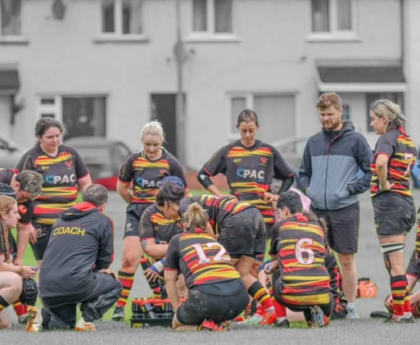Ten Facts You Didn’t Know About Rugby Balls
On 11 April 2015 the crowds will roar as the whistle blows to kick off the annual Aberdeen Asset Management Melrose Sevens tournament. The ball in question selected for this prestigious kick off will be a Gilbert ball especially designed for the Sevens tournament. It has taken centuries of innovation, development and dedication to manufacture rugby balls to the standard now required and expected by a globally popular and demanding sport. The ‘Gilbert’ is a piece of history in its own right with a long and passionate heritage but every rugby ball is far more than just a ball…
1 Initially rugby balls were more spherical and plum-shaped as they were made from pigs’ bladders. This meant they could also be different sizes depending on the size of the pig. It was only towards the end of the 19th Century when they began to be made using man made rubber inner tubes that they gained their distinctive oval shape and more uniform dimensions.
2 The distinctly shaped oval balls are deemed suited to the game of rugby as they are perfect to catch, hold and run with and don’t roll as far so don’t go out of play as often. It was also deemed important to ensure that rugby balls clearly differed from footballs.
3 The two big trailblazers in rugby ball development were Richard Lindon (1816 – 1887) and William Gilbert (1799-1877) who created balls for Rugby school where it is said that the game of rugby was first played. The balls were originally hand stitched, four-panelled and made of pigs’ bladders and leather casings. Both men owned boot and shoe making businesses near the school.
4 The pig’s bladder was inflated by inserting the stem of a clay pipe into the opening of the green, odorous bladder so it wasn’t a job for the faint hearted. Inflating a pig’s bladder rugby ball could be a deadly business – employees could become ill if blowing up a diseased bladder and this is what was considered to have killed Richard Lindon’s wife after decades of dedicated rugby ball inflation.
5 The size and shape of the rugby ball became strictly defined and written into the rules of the game from 1892 onwards. Back then the length had to be 11-11.25 inches, its circumference (end on) was 30-31 inches, the circumference (in width) had to be 25.5-26 inches, its weight was 12-13 ounces and it had to be hand sewn with not less than 8 stitches to the inch.
6 Rugby ball development incorporated other famous names – Charles Macintosh, of the raincoat fame, was the first manufacturer to supply a higher quantity of rubber bladders to make the standardisation of these components possible.
7 The fourth generation of Gilberts ensured that the ‘Gilbert’ ball was at the epicentre of the rugby zeitgeist. James Gilbert was serving in the army in France when his father died in 1917 so he returned after the war to dedicate himself to the family firm. His attention to detail went before him and he was extremely particular that the ‘Gilbert’ ball retained its reputation for excellence. James networked extensively to keep the Gilbert name on everyone’s lips and even checked and stamped each match ball personally.
8 The leather used in traditional rugby balls has always been prone to water logging in inclement weather yet they were still popular until 1980 when the Rugby Union replaced leather models with modern balls encased in synthetic waterproof materials.
9 Gilbert has supplied the Rugby World Cup balls for all tournaments since 1995 and it was awarded the contract to supply balls for the Rugby World Cup in 2015. The ball in the spotlight then will be their newly launched MATCH XV ball.
10 The selection of the rugby ball is an important decision for the Aberdeen Asset Management Melrose Sevens tournament. The choice is made by Melrose RFC and in April 2015, the 125th playing of the tournament, a Gilbert ball uniquely designed for Sevens play will be at the heart of the action.
The 125th playing of the Aberdeen Asset Management Melrose Sevens takes place on the 11 April 2015. The game of rugby sevens was created in Melrose in 1883 and its popularity has spread to attract global interest and participation. Teams from across Scotland will compete against international teams in the Borders town of Melrose which takes on a carnival atmosphere for the duration of this key date in the sporting calendar. To find out more about the Aberdeen Asset Management Melrose Sevens visit http://www.melrose7s.com and to book tickets click on http://www.melroserugbyshop.co.uk/







